Category Archives: Winter 2014
GOLD
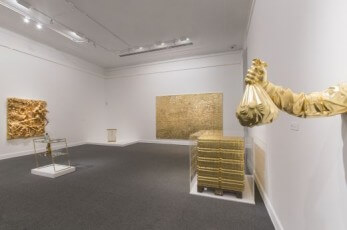
Written on December 3, 2014 at 10:39 am, by Jessalyn Santos-Hall
Curated by José Carlos Diaz for the Bass Museum of Art’s 50th anniversary, GOLD assesses the power, effect, and significance of gold through both literal and abstract approaches. The group show consists of 30 works from 24 multinational artists, all unified by the implementation of the precious metal in their pieces. Ranging from photography to sculpture to video, GOLD strengthens concepts of beautification, power, deception, perfection, ancestry, and divinity by encouraging viewers to question the capability of gold.
Pedro Reyes

Written on December 1, 2014 at 8:07 pm, by Jessalyn Santos-Hall
I just had show at Jumex with puppets, Permanent Revolution. It was my first production turning the museum into a theatre. The play intertwined art and politics: Diego Rivera invited Trotsky to Mexico and stay in his home, Frida Kahlo falls in love with Trotsky. There is an assassination plot with a Stalinist supporter, against Trotsky. It had romance, murder, art, politics, economics, intrigue, science fiction. Everything. My hope was to create something that wide audiences could follow. It’s going to tour Mexico; I’d like it to circulate in theaters.
Daniel Arsham
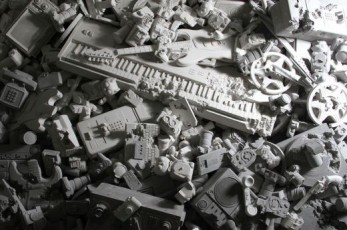
Written on December 1, 2014 at 8:04 pm, by Jessalyn Santos-Hall
Daniel Arsham and I grew up in Miami of the 1980s and 1990s. Our lives have intersected throughout the years, but we only became friends after working together on Snarkitecture’s Drift Pavilion for Design Miami/ in 2012. We recently met for breakfast one fall morning in New York to discuss our lives, new projects and his upcoming show at Locust Projects, Welcome to the Future.
Julian Schnabel

Written on December 1, 2014 at 7:53 pm, by Jessalyn Santos-Hall
It’s been three and a half decades since Julian Schnabel rocked the art world with an exhibition of paintings made on broken dinner plates. Since then, he’s never shied from reinvention, be it aesthetic, or personal. In one of his trademark expansions, he became known as a singular filmmaker, creating works like “Basquiat,” “Before Night Falls,” and “The Diving Bell and the Butterfly.” This fall, the Museum of Art | Fort Lauderdale presents yet another side of Schnabel—a painter connected in spirit to Francis Picabia and J.F. Willumsen. On the occasion of this exhibition, Café Dolly: Picabia, Schnabel, Willumsen, he spoke to the Miami Rail editor Hunter Braithwaite.
Robert Winthrop Chanler
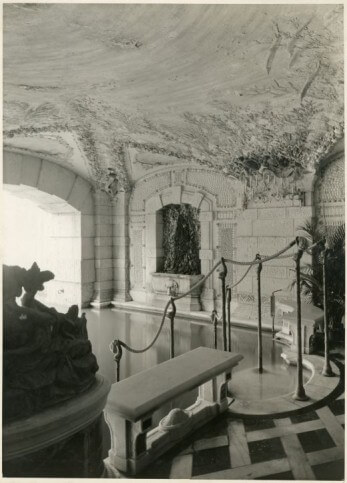
Written on December 1, 2014 at 7:32 pm, by Jessalyn Santos-Hall
Ornate and extraneous, Robert Winthrop Chanler’s work at the Vizcaya Museum and Gardens can trace part of Miami’s history of wealth, patronage, and aesthetics that developed concurrently with its settlement. It also reminds visitors of South Florida’s almost immediate proclivity towards ostentation and decadence. Chanler was a descendant of some of New York’s most elite families (his mother was an Astor) and his artwork reflected the education he was able to attain, as well as the comfort within which he lived. He’s often characterized as an independent Modernist, someone who blended decorative, international style with fine art. The fantastical, exotic screens, murals, and architectural elements he created were distinct, and have remained unique from his peers. Despite the European avant-garde dominating the memory of the exhibition, Chanler had perhaps the largest American showing at the first Armory Show in 1913, which had particularly sought decorative artists.
John Baldessari
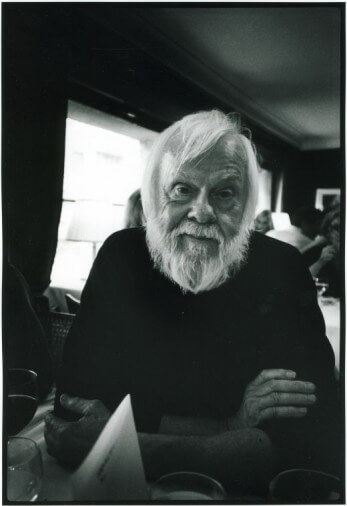
Written on December 1, 2014 at 7:25 pm, by Jessalyn Santos-Hall
John Baldessari is one of the most influential artists of our time. Born in California during the summer of 1931, he has made art for the past six decades, ranging from his early practice as a painter to seminal conceptual artworks made using found photographs and texts. His projects include artist books, videos, films, and billboards. His artwork has been featured in more than 200 solo exhibitions and in over 1000 group exhibitions in the U.S. and Europe. In 2009 he received the Golden Lion for Lifetime Achievement, awarded by La Biennale di Venezia.
Bruno Latour

Written on December 1, 2014 at 7:10 pm, by Jessalyn Santos-Hall
By weaving anthropology, sociology, and philosophy, the French thinker Bruno Latour has positioned himself at the frontier of Science Studies, a flexible and searching response to the Anthropocene. This September, he spoke to Miami Rail contributor Camila Marambio about dance, the climate, and the importance of working across disciplines. The conversation occurred on a bench at the Museo do Indio in Rio de Janeiro. The two were taking a break from the colloquium “The Thousand Names of Gaia: from the Anthropocene to the Age of the Earth” organized by Eduardo Viveiros de Castro and Latour himself.
Claudia La Rocco, The Best Most Useless Dress
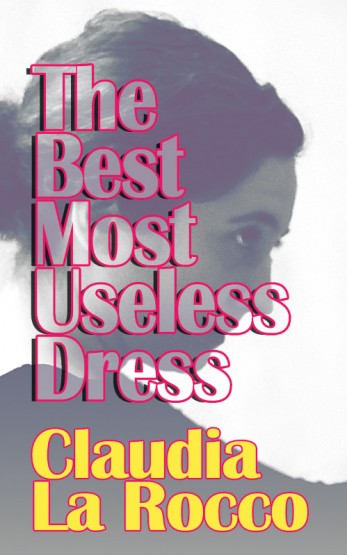
Written on December 1, 2014 at 6:03 pm, by Jessalyn Santos-Hall
Claudia La Rocco’s The Best Most Useless Dress is not poetry. That is, it’s not poetry exclusively, but an amalgam of writings, including criticism, handwritten notes, musings, and bits of conversation (also, images) with any combination of these at times appearing within a single piece. The result of all this would be disorienting were it not for recurring themes and phrases, and, perhaps more importantly, the earnestness with which she approaches each poem and the general sense that she has eschewed the desire to provide the reader with something polished and perfect. This meandering, this hesitation, this doubling back creates an intimacy with the reader that excuses some of the haphazardness of the work—no, not excuses—justifies.
Rafael Domenech: Time / Memory / Context
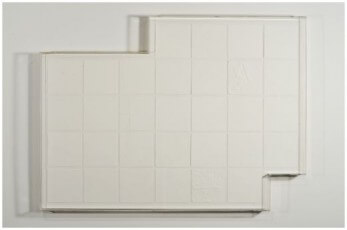
Written on December 1, 2014 at 6:02 pm, by Jessalyn Santos-Hall
Memory has been at the core of human existence from time immemorial. Our fleeting presence seems to be at the root of a pressing need to seize life through memory and remembrance—the only way, apparently, to defeat time.
Echos Myron
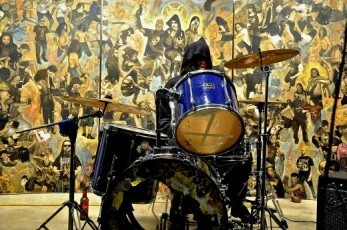
Written on December 1, 2014 at 5:56 pm, by Jessalyn Santos-Hall
Echos Myron, co-curators Beatriz Monteavaro and Priyadarsini Ray’s exhibition of visual artists and musicians working shoulder to shoulder in South Florida, is a celebration of their scene. It’s a happily crowded show, but I didn’t notice any of the Wynwood-style art that would be a nod to hip-hop’s enormous influence on visual culture. Here, the aesthetic is punk and music is mostly shorthand for rock n’ roll.
